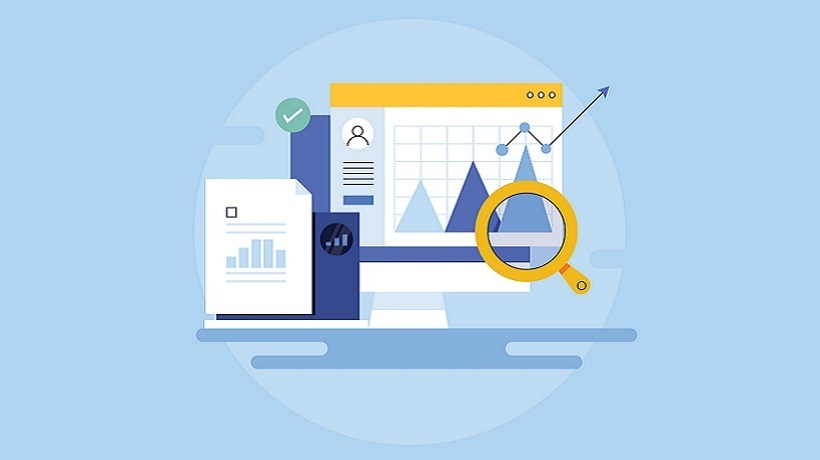Improve Learning Outcomes Through Data-Driven Instructional Design
Data-driven Instructional Design is a process of improving learning outcomes by leveraging data and cognitive science principles. It involves the use of scientific research to identify learning objectives, develop effective instructional content, deliver meaningful experiences, assess learning results, and optimize performance over time. The core principle behind this approach is that instruction should be tailored to an individual's needs to maximize their potential for success. This can be accomplished through careful analysis of learner data, such as test scores, engagement metrics, demographic information, etc., which can then inform decisions about how best to structure the instructional environment and match it with the individual's learning style and preferences. By harnessing the power of these insights into human behavior, educators can create more powerful educational experiences that lead to improved student outcomes.
How To Leverage Data-Driven Instructional Design
Identifying Learning Objectives
To effectively identify learning objectives, educators must first define these goals in terms of what is expected from the student. This may involve creating specific knowledge or skill outcomes that need to be achieved and measurable criteria for the successful completion of each goal. The use of validated tests and quizzes can then help ensure that these objectives are being met, by assessing student performance against established standards. In addition, success measures such as grades and feedback from instructors can indicate how well students are mastering the material presented during instruction. Finally, data analytics tools can be used to reveal patterns in student responses which could indicate areas where further instruction may be needed for better long-term results. By taking a comprehensive approach to evaluating their students’ progress, educators will be able to create instructional experiences that maximize learning potential while also keeping pace with changing educational needs over time.
Developing Instructional Content
Creating effective instructional content requires a deep understanding of the material as well as an eye for design. Educators should strive to create educational materials that communicate concepts and engage students in meaningful ways. To do this, they must consider the best methods for presenting information to make it accessible and enjoyable for all learners. One way is by developing engaging assignments and activities, that allow students to practice what they have learned while providing opportunities for exploration and discovery. This may include simulations, case studies, or other interactive materials that can help bring abstract ideas to life. Additionally, educators should construct supporting graphics and animations, which can provide visual support when words alone might not be enough. By using these strategies together, educators will be able to create sound instructional content that captures student interest, while still conveying important learning objectives effectively.
Delivering Instructional Experiences
Once learning objectives have been established and instructional materials created, the next step is to deliver those experiences in a manner that maximizes understanding and engagement. Here, it is essential to select an appropriate delivery method that best fits the needs of the individual learner, while also providing an intuitive User Interface. For example, if learners require more visual instruction, then videos or interactive graphics may be preferable, whereas those who prefer auditory instruction may find audio-based components, such as podcasts, more effective. Additionally, educators should consider methods for personalizing student experiences, through customization options like tailored content delivery or adaptive learning paths. This would allow them to create unique pathways based on each student’s preferences and capabilities, to ensure the students are getting the most out of their educational experience. By leveraging these strategies together, educators can ensure that students receive meaningful instruction which leads to improved outcomes over time.
Assessing Learning Outcomes
Once the instructional content has been delivered, educators must assess how well it was received and understood by their students. This can be accomplished through the use of evaluative criteria, which measure outcomes such as knowledge mastery or skill development. To ensure accuracy in the results, these standards should be established before instruction begins and applied consistently across learners during an assessment. In addition to evaluating performance against predetermined criteria, educators may also wish to conduct feedback surveys that allow students to provide qualitative input on the instruction they received. These surveys can provide valuable insights into what works well for learners, and where further improvements could be made for better learning experiences in the future. Finally, data analytics tools enable educators to analyze student performance over time, using metrics such as test scores or engagement levels which can help them identify areas that need extra attention or resources to optimize learning outcomes. By taking a comprehensive approach to assessing student progress, educators will gain a better understanding of how best to serve their unique needs, while also continuing on a path toward improved educational success overall.
Optimizing Instructional Materials
Artificial Intelligence (AI)-powered tutoring technology is becoming increasingly popular as a way to provide personalized, one-on-one instruction to students efficiently and cost-effectively. This type of technology leverages Artificial Intelligence algorithms, which can be used to tailor instructional content based on each student’s individual needs and learning preferences. These systems can also provide immediate feedback and guidance when necessary, allowing for an experience that resembles traditional face-to-face tutoring without the time or expense associated with it. By integrating this type of technology into instructional materials, educators can ensure that all learners receive the support they need to succeed, no matter where they are located or what their schedule looks like.
Gamified experiences offer another powerful tool for engaging students in educational material by using game mechanics, such as rewards, challenges, levels, etc., to motivate them toward the successful completion of activities and assessments. This method is particularly useful when teaching complex concepts, since games often require players to think critically, while still having fun at the same time. Gamification also gives instructors opportunities for customization depending on their goals; they can choose from a variety of different game elements, such as leaderboards or virtual currency, to create unique experiences tailored specifically to their lesson plans. As more schools start utilizing these strategies within their curriculums, gamified experiences will become an invaluable tool for improving both engagement and achievement among students everywhere.
Adaptive learning technology provides yet another option when it comes to optimizing instructional materials across various educational settings, by customizing course content according to each student’s capabilities and progress over time. Through data analysis techniques such as machine learning algorithms, this approach allows educators to identify areas where extra attention may be needed, so that targeted resources can be applied appropriately. Furthermore, adaptive learning systems have been shown increase retention rates compared to traditional models, due to increased personalization, which results in higher motivation among learners. With its potential to revolutionize how we teach tomorrow's generations, adaptive learning presents exciting possibilities for teachers looking to maximize the impact of the classroom.
Conclusion
In conclusion, leveraging cognitive science and data-driven Instructional Design can greatly improve educational outcomes for students. By understanding how the brain processes and retains information, educators can develop more effective instructional materials that are tailored to the individual needs of their learners. Data analytics tools provide insights into where further instruction may be needed, while allowing teachers to adjust their approach accordingly to better meet student performance expectations. Additionally, AI-powered tutoring technology and gamified experiences offer powerful methods for engaging learners in meaningful ways, while adaptive learning systems help ensure all students receive personalized support as they progress through the course material. Through these strategies combined, educators will be able to maximize the learning potential among all students, by providing them with the highest quality teaching experience possible.








